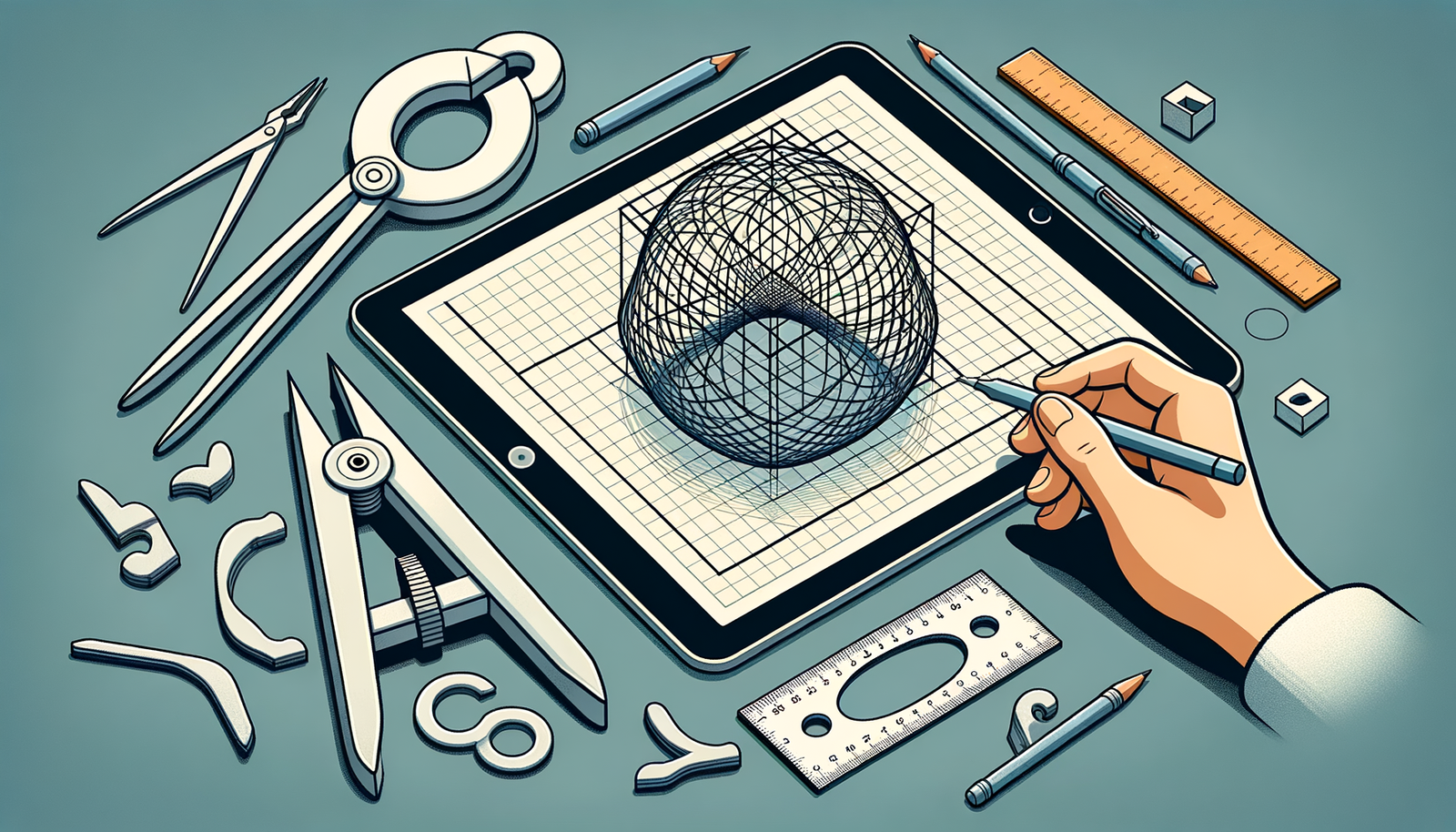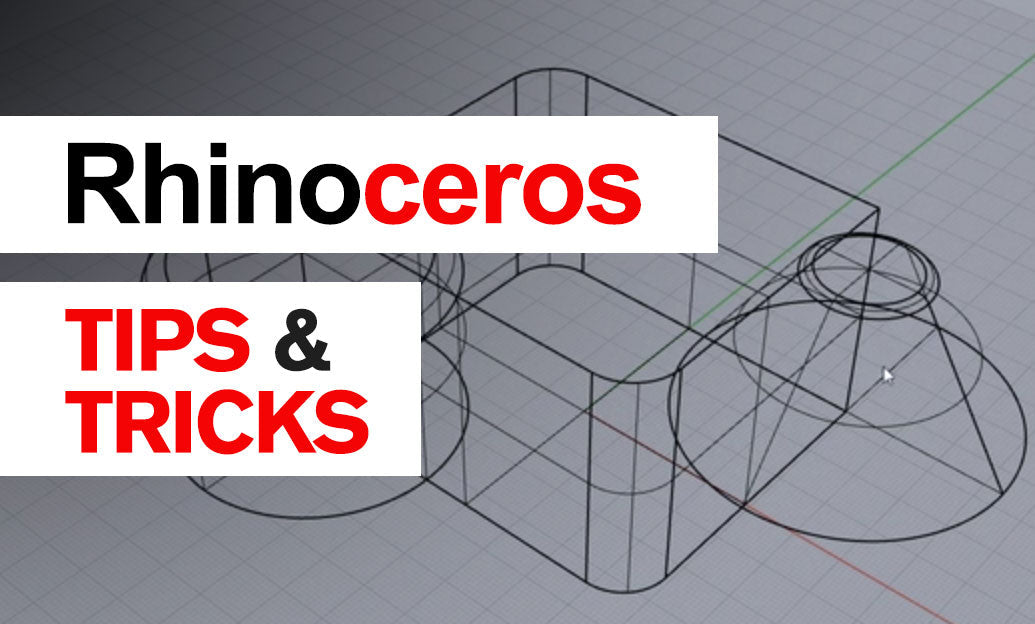Your Cart is Empty
Customer Testimonials
-
"Great customer service. The folks at Novedge were super helpful in navigating a somewhat complicated order including software upgrades and serial numbers in various stages of inactivity. They were friendly and helpful throughout the process.."
Ruben Ruckmark
"Quick & very helpful. We have been using Novedge for years and are very happy with their quick service when we need to make a purchase and excellent support resolving any issues."
Will Woodson
"Scott is the best. He reminds me about subscriptions dates, guides me in the correct direction for updates. He always responds promptly to me. He is literally the reason I continue to work with Novedge and will do so in the future."
Edward Mchugh
"Calvin Lok is “the man”. After my purchase of Sketchup 2021, he called me and provided step-by-step instructions to ease me through difficulties I was having with the setup of my new software."
Mike Borzage
Design Software History: The Role of Linear Algebra in Revolutionizing Geometric Modeling in Design Software
July 09, 2024 6 min read


The Role of Linear Algebra in Geometric Modeling
Introduction
Geometric modeling has revolutionized the design software industry, becoming a cornerstone in the fields of computer-aided design (CAD), computer-aided manufacturing (CAM), and computer graphics. Central to this revolution is linear algebra, a branch of mathematics that provides the necessary tools for creating, manipulating, and transforming geometric shapes in a digital environment.
The significance of linear algebra in geometric modeling cannot be overstated. From representing points in space to complex transformations like rotation and scaling, linear algebra forms the mathematical foundation that allows for precise and efficient manipulation of geometric data. This blog delves into the core concepts of linear algebra, explores its historical development, and examines its modern applications and future prospects in geometric modeling.
The journey of geometric modeling began in the early days of computer graphics, with pioneering work that laid the groundwork for modern design software. Key figures such as Ivan Sutherland and Pierre Bézier played crucial roles in integrating mathematical concepts into digital design, paving the way for the sophisticated tools we use today.
Core Concepts of Linear Algebra in Geometric Modeling
Vectors and Matrices
Vectors
In geometric modeling, vectors are fundamental in representing points, directions, and transformations in space. A vector is an ordered list of numbers that can be visualized as an arrow pointing from one point to another. Vectors are used to describe positions in space, as well as directions and magnitudes of movements. For instance, in a 3D space, a vector can be represented as (x, y, z), where x, y, and z are coordinates.
Vectors enable operations such as addition, subtraction, and scaling, which are essential for modeling transformations. These operations allow designers to manipulate objects within a virtual environment with precision and ease.
Matrices
Matrices play a crucial role in performing linear transformations such as translation, rotation, and scaling. A matrix is a rectangular array of numbers arranged in rows and columns, and it is used to perform complex operations on vectors. When a vector is multiplied by a matrix, the result is a new vector that has been transformed according to the properties of the matrix.
- Translation: Moving an object from one position to another.
- Rotation: Rotating an object around an axis.
- Scaling: Changing the size of an object.
These transformations are integral to geometric modeling, allowing designers to manipulate objects in a virtual space accurately. Matrices provide a powerful and efficient way to perform these operations, making them indispensable in design software.
Eigenvalues and Eigenvectors
Definition
Eigenvalues and eigenvectors are fundamental concepts in linear algebra that have significant applications in geometric modeling. An eigenvector is a non-zero vector that changes by only a scalar factor when a linear transformation is applied to it. The corresponding eigenvalue is the scalar by which the eigenvector is scaled.
If A is a matrix and v is an eigenvector of A, then the relationship can be expressed as:
A * v = λ * v
where λ is the eigenvalue associated with the eigenvector v.
Application
Eigenvalues and eigenvectors are used in various modeling techniques, such as deformation and principal component analysis (PCA). In deformation, they help describe how objects change shape under different forces. PCA, a statistical procedure, uses eigenvalues and eigenvectors to reduce the dimensionality of data, which is valuable in simplifying complex models and enhancing computational efficiency.
Homogeneous Coordinates
Introduction
Homogeneous coordinates are an extension of traditional Cartesian coordinates, providing a convenient way to perform perspective transformations and other complex operations. In homogeneous coordinates, a point in 3D space is represented by a four-coordinate vector (x, y, z, w). This representation allows for more straightforward mathematical manipulation, particularly in transformations and projections.
Applications
Homogeneous coordinates are widely used in transformation operations, such as rotation, scaling, and translation. They also play a crucial role in perspective projections, which are essential for rendering 3D objects on a 2D screen. By using homogeneous coordinates, designers can achieve more accurate and efficient transformations, enhancing the overall quality of the geometric modeling process.
Historical Development and Key Contributors
Early Pioneers
Ivan Sutherland and Sketchpad
Ivan Sutherland is often regarded as the father of computer graphics, thanks to his groundbreaking work on Sketchpad. Developed in the early 1960s, Sketchpad was the first program to use a graphical user interface (GUI) and allowed users to interact with objects on a screen using a light pen. Sutherland's work laid the foundation for future advancements in computer graphics, integrating mathematical concepts such as linear transformations and matrices into digital design.
Pierre Bézier and Bézier Curves
Pierre Bézier, a French engineer working for Renault, made significant contributions to the field of geometric modeling with the development of Bézier curves. These curves provide a mathematical way to represent smooth shapes and are widely used in computer graphics, animation, and CAD software. Bézier curves allow for precise control over the shape of curves and surfaces, making them an essential tool in modern design software.
Software Milestones
Catmull and Blinn
Ed Catmull and Jim Blinn are two prominent figures in the development of algorithms using linear algebra for 3D rendering. Catmull, co-founder of Pixar, developed algorithms for rendering curved surfaces, while Blinn's work on shading models and texture mapping significantly advanced the field of computer graphics. Their contributions have had a lasting impact on the development of design software, making it possible to create more realistic and detailed 3D models.
Development of NURBS
Non-uniform rational B-splines (NURBS) are mathematical representations of curves and surfaces that provide greater flexibility and precision than traditional Bézier curves. NURBS have become the standard in geometric modeling, allowing designers to create complex shapes with a high degree of accuracy. The development of NURBS has been pivotal in advancing the capabilities of design software, enabling the creation of more intricate and realistic models.
Industry Impact
Early Systems
Companies like Autodesk (known for AutoCAD) and Dassault Systèmes (known for CATIA) played significant roles in integrating linear algebra into their software. AutoCAD, developed in the early 1980s, became one of the first widely adopted CAD programs, revolutionizing the design process in various industries. CATIA, originally created for aerospace engineering, has been instrumental in advancing the capabilities of geometric modeling, making it a vital tool for engineers and designers worldwide.
Modern Applications and Future Directions
Current Software
SolidWorks and Rhino
Modern CAD software such as SolidWorks and Rhino rely heavily on linear algebra for their functionality. SolidWorks, developed by Dassault Systèmes, is known for its powerful modeling capabilities and intuitive user interface. Rhino, developed by Robert McNeel & Associates, is widely used in architecture, industrial design, and jewelry design for its versatility and precision in handling complex shapes.
Blender and Maya
In the realm of animation and complex transformations, Blender and Maya are two of the most popular software tools. Blender, an open-source 3D creation suite, and Maya, developed by Autodesk, utilize linear algebra to perform intricate transformations, animations, and simulations. These tools have become indispensable in the entertainment industry, enabling the creation of stunning visual effects and realistic animations.
Emerging Technologies
Machine Learning and AI
Machine learning and artificial intelligence are emerging technologies that heavily rely on linear algebra. In design software, these technologies are used to automate tasks, enhance simulation capabilities, and improve overall efficiency. Linear algebra provides the mathematical foundation for many machine learning algorithms, making it a critical component in the development of intelligent design tools.
Quantum Computing
Quantum computing has the potential to revolutionize geometric modeling by providing unprecedented computational power. While still in its early stages, quantum computing could significantly enhance the capabilities of design software, allowing for more complex simulations and optimizations. Linear algebra will continue to play a crucial role in this new era of computing, enabling the development of more advanced and efficient algorithms.
Future Prospects
Enhanced Simulation Capabilities
As computational power continues to increase, the field of geometric modeling is expected to evolve with enhanced simulation capabilities. Advanced algorithms and more powerful hardware will enable designers to create more detailed and accurate models, improving the overall quality and efficiency of the design process. Linear algebra will remain a fundamental component in these advancements, providing the necessary mathematical tools for complex simulations.
Integration with Other Disciplines
The integration of geometric modeling with other disciplines, such as biomedical engineering and environmental modeling, will open up new possibilities for innovation and interdisciplinary collaboration. In biomedical engineering, geometric modeling can be used to create accurate anatomical models for surgical planning and medical research. In environmental modeling, it can help simulate natural phenomena and assess the impact of human activities on the environment. The future of geometric modeling lies in its ability to adapt and integrate with various fields, harnessing the power of linear algebra to drive progress and innovation.
Also in Design News

Rhino 3D Tip: Rhino Material Optimization: Nesting, Lightweighting, and Cut-Length Reduction
December 31, 2025 2 min read
Read More
Design Software History: Constraint Solving in CAD: From Sketchpad to Modern Parametric Engines
December 31, 2025 12 min read
Read More
Intent-Aware Scan-to-BRep: Integrating LiDAR Point Clouds into Solid Modeling Pipelines
December 31, 2025 12 min read
Read MoreSubscribe
Sign up to get the latest on sales, new releases and more …


